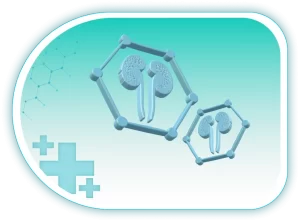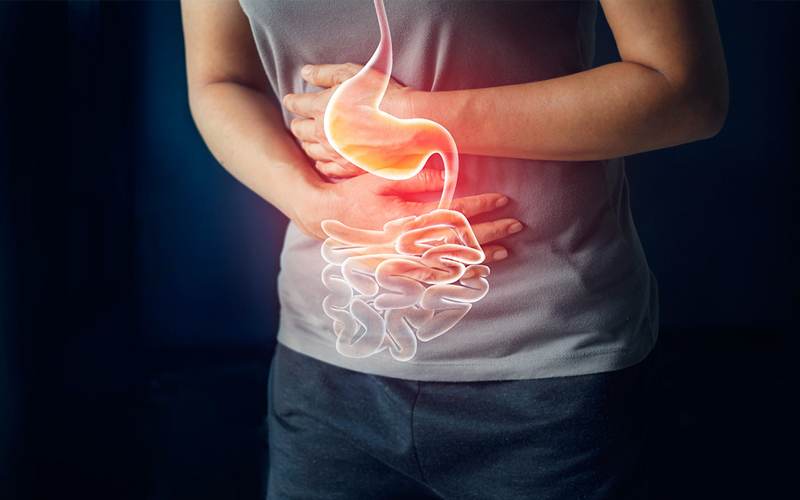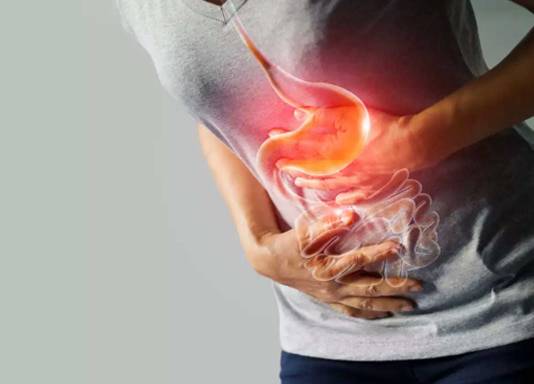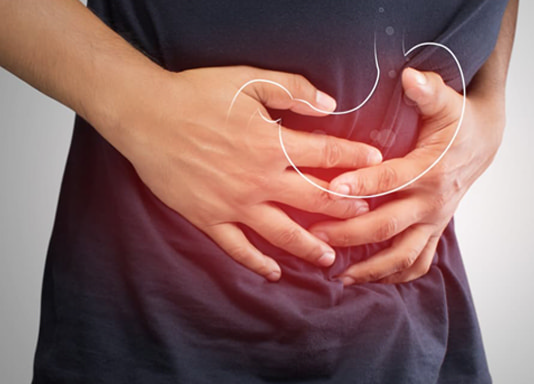Typically with symptoms like heartburn, which is reported to effect 1/3 of population. Among them, about 1/3 is reported to have endoscopic erosion (mucosal break). However, severe erosion corresponding to Los-Angeles Grade C and D is only found in 3% of GERD patients who have endoscopic erosion.
Esophageal symptoms of dysphagia and regurgitation may imply obstructive physiology including esophageal motility disorders such as achalasia, whereas heartburn, regurgitation, and chest pain may indicate the presence of GERD. Extraesophageal symptoms such as cough, hoarseness, and globus are also shown to be associated with GERD. We herein introduce several diagnostic tests for GERD.
Empirical PPI trial
When patients present with symptoms of heartburn and acid regurgitation, an empiric trial of acid suppressive therapy is either test or treatment of choice. An empirical trial of PPI (proton pump inhibitors) for 7-28 days is a pragmatic approach in clinical practice, given limited invasiveness and lower cost. This approach may also be used for chest pain presentation where ischemic heart disease (IHD) has been ruled out. GERD is the most common mechanism for NCCP (non-cardiac chest pain). In fact, among patients presenting chest pain, about 50% of patients with IHD and 70% of patients without IHD are reported to have GERD. As a diagnostic test for GERD, this method demonstrates a relatively high sensitivity of 78% (a GERD patient shows test-positive), and a relatively low specificity of 54% (a test-positive patient really has GERD).
Endoscopy
Since PPI is such an effective therapy for GERD, increasing popularity of PPI has decreased the likelihood of finding reflux esophagitis on endoscopy. Among GERD patients who are diagnosed by ambulatory reflux monitoring, only 20-30% had been reported to have endoscopic findings of GERD (mucosal break). Despite relatively low sensitivity for a diagnosis of GERD, endoscopy provides an important role to objectively diagnose the presence of erosive esophagitis and Barrett’s esophagus, which are conclusive evidence of GERD. As for the diagnosis of hiatus hernia, endoscopy has also relatively low sensitivity compared to barium radiography and HRM (high-resolution impedance manometry).
Ambulatory Reflux Monitoring
This is the gold standard for conclusive Gastroesophageal Reflux Disease (GERD) diagnosis. If symptomatic patients who do not respond to PPI are planned for invasive (surgical) therapy, or concern about long-term PPI therapy, ambulatory reflux monitoring is thus recommended. 24-hour esophageal PH test uses a thin, small tube with a device on the tip that senses acid which is gently passed through nose down to the esophagus. The wireless recorder has several buttons on it that are pressed to mark certain symptoms, while subject follows usual daily routine. Evaluation includes acid exposure time (AET) and reflux symptom association (RSA), which are reported to correlate with the responsiveness for antireflux therapy, including PPI and surgery. Using wireless PH monitoring, extended recording time of 48-96 hours is reported to increase the diagnostic yield in adults with infrequent symptoms. Even in patients with endoscopic erosive esophagitis and Barrett’s esophagus, ambulatory reflux monitoring is still useful for the evaluation of indication for invasive (surgical) management.
HRM (high-resolution impedance manometry)
This is a gold standard for diagnosing esophageal motility disorders including achalasia. As mentioned before, GERD is the most common mechanism for NCCP (non-cardiac chest pain). However, if chest pain does not respond to PPI therapy, HRM is an important diagnostic modality, since esophageal dysmotility can be an explanation for chest pain. It is also recommended for evaluating hiatus hernia and should be performed before invasive GERD management. Alternatively, recently developed FLIP (functional lumen imaging probe) is also used for this purpose.
Japanese Board-certified Gastroenterological Surgeon
胃食道逆流症(GERD)の診断
GERDは、最も一般的な消化器疾患の1つであり、通常、胸焼けなどの症状を伴い、人口の約3分の1に影響を与えると報告されています。 その中で、約1/3が内視鏡的びらん(粘膜障害)を持っていると報告されています。 ただし、Los Angeles分類Grade CおよびDに対応する重度のびらんは、内視鏡的びらんがあるGERD患者の3%にのみ見られます。
嚥下障害および食物逆流などの食道症状は、アカラシアなどの食道運動障害を含む閉塞性機序による食道疾患を示唆している可能性がありますが、胸焼け、逆流症、および胸痛は、GERDの存在を示している可能性があります。 咳、嗄声、ヒステリー球などの食道外症状もGERDに関連していることが示されています。 ここでは、GERDのいくつかの診断テストを紹介します。
試験的PPI投与
患者が胸焼けや胃酸逆流の症状を示している場合、酸抑制療法の試験的投与が診断および治療の両方の手段として用いられます。 PPI(プロトンポンプ阻害剤)の7〜28日間の試験投与は、低侵襲で、低コストであることから、臨床診療における実用的なアプローチです。このアプローチは、虚血性心疾患(IHD)が除外されている胸痛症状にも使用されます。 GERDは、NCCP(非心臓性胸痛)の最も一般的なメカニズムです。実際、胸痛を呈している患者の中で、IHDのある患者の約50%とIHDのない患者の70%がGERDを持っていると報告されています。 GERDの診断テストとして、この方法は、78%の比較的高い感度(GERD患者がテスト陽性を示す)、および54%の比較的低い特異性(テスト陽性患者が実際にGERDを有する)を示すと報告されています。
内視鏡検査
PPIはGERDの非常に効果的な治療法であるため、PPIの人気が高まるにつれ、内視鏡検査で逆流性食道炎を発見する可能性が低くなりました。携行PHモニタリングによって診断されたGERD患者のうち、GERD(粘膜障害)の内視鏡所見があると報告されたのはわずか20〜30%でした。胃食道逆流症の診断に対する感度は比較的低いにもかかわらず、内視鏡検査は、胃食道逆流症の決定的な証拠であるびらん性食道炎とバレット食道の存在を客観的に診断するための重要な役割を提供します。食道裂孔ヘルニアの診断に関しては、内視鏡検査はバリウムX線撮影やHRM(高分解能インピーダンスマノメトリー)と比較して感度は比較的低いと言われています。
携帯PHモニタリング
これは、GERD診断におけるゴールドスタンダードです。したがって、PPIに反応しない症候性の患者が侵襲的(外科的)療法を計画されている場合、または長期のPPI療法が懸念される場合は、携帯型PHモニタリングが推奨されます。 24時間の食道PHモニターでは、先端にデバイスが付いた細い小さなチューブを鼻から食道まで優しく挿入し、酸度を常時記録します。ワイヤレスレコーダーには、特定の症状が起きたときに押されるいくつかのボタンがあります。モニター中も被験者は通常の日常生活に従います。評価には、酸曝露時間(AET)および逆流症状関連(RSA)が含まれ、これらはPPIおよび手術を含む治療法に対する反応性と相関すると報告されています。ワイヤレスPHモニタリングを使用して、記録時間をさらに48〜96時間に延長することにより、より酸逆流頻度の少ない被験者に対しての診断率を高めることが報告されています。内視鏡で診断済みのびらん性食道炎およびバレット食道の患者に対しても、携帯PHモニタリングは、侵襲的(外科的)治療適応の評価に依然として有用です。
HRM(高分解能インピーダンスマノメトリー)
これは、アカラシアを含む食道運動障害を診断するためのゴールドスタンダードです。 前に述べたように、GERDはNCCP(非心臓性胸痛)の最も一般的なメカニズムです。 ただし、胸痛がPPI療法に反応しない場合、食道運動障害が胸痛の原因である可能性があるため、HRMは重要な診断法です。 食道裂孔ヘルニアの評価としても推奨され、侵襲的なGERD治療を予定する場合は施行する必要があります。 また、最近開発されたFLIP(機能的ルーメンイメージングプローブ)もこの目的に使用されます。


















